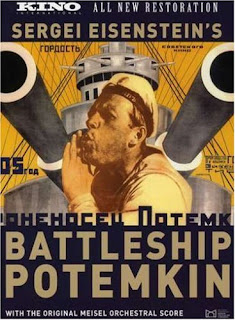Further notes
Preferred readings. Eg: Wizard of Oz is a family/children’s film about an innocent girl who battles against an evil witch with the help of her unusual friends

E.g.:
Battleship Potemkin is a story about how the evil Bolsheviks persecuted the poor Russian people and how the people stood up to this oppression and brought about their freedom

Deviant or Subversive readings E.g.: Wizard of Oz is an allegory for homosexuality. The film has a sub text of promoting homosexuality and gay pride.
E.g.: The British government considered Battleship Potemkin as a propaganda film promoting communist ideology as a solution to equalities brought by Democracy and capitalism
RECEPTION THEORY
Interface: The mode of exhibition - Where and what you absorb/consume the film on: Cinema, Blu-ray, DVD, Projector, TV, Internet could have an impact on the viewing experience as a spectator
Ÿ Universal responses: Think about how you respond to a film and how does it compare to the wider public - How do filmmakers attempt to make audiences react to their narratives
Ÿ RECEPTION THEORY
Ÿ Think about what happens to you when you watch the sequence?
Ÿ What micro features are responsible for your reactions/responses
Ÿ Your ONE MICRO analysis (lighting, sound, editing, performance & movement) must be OBVIOUS within the clip
Ÿ Ideally it should be a self contained clip (3 to 5 min’s) or if it is part of a sequence it should have a clear beginning and end.
Ÿ REMEMBER to ANALYSE - DON’T just identify and describe in formal/technical terms. Ie: always give CONNOTATIONS (meanings), not just DENOTATIONS
